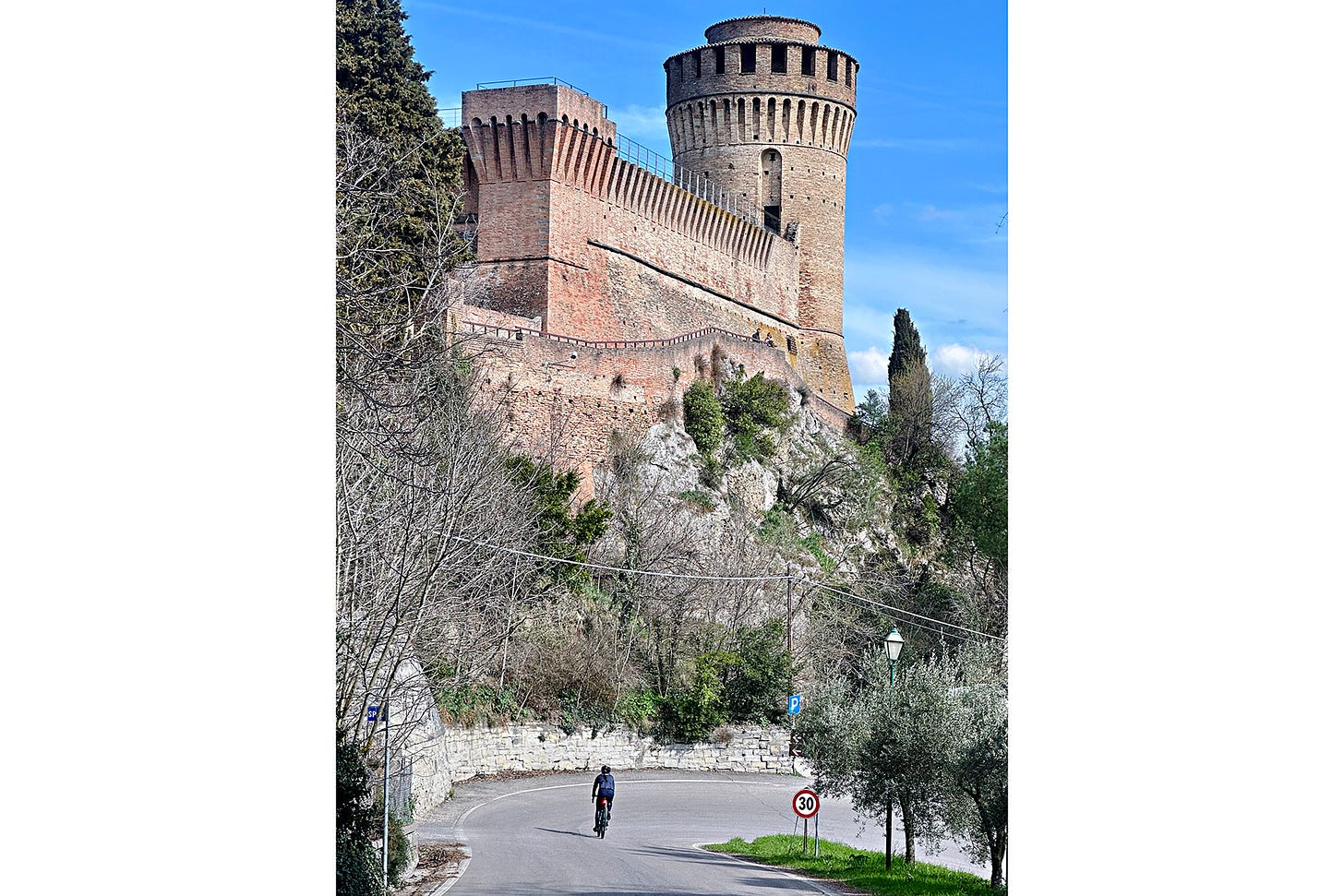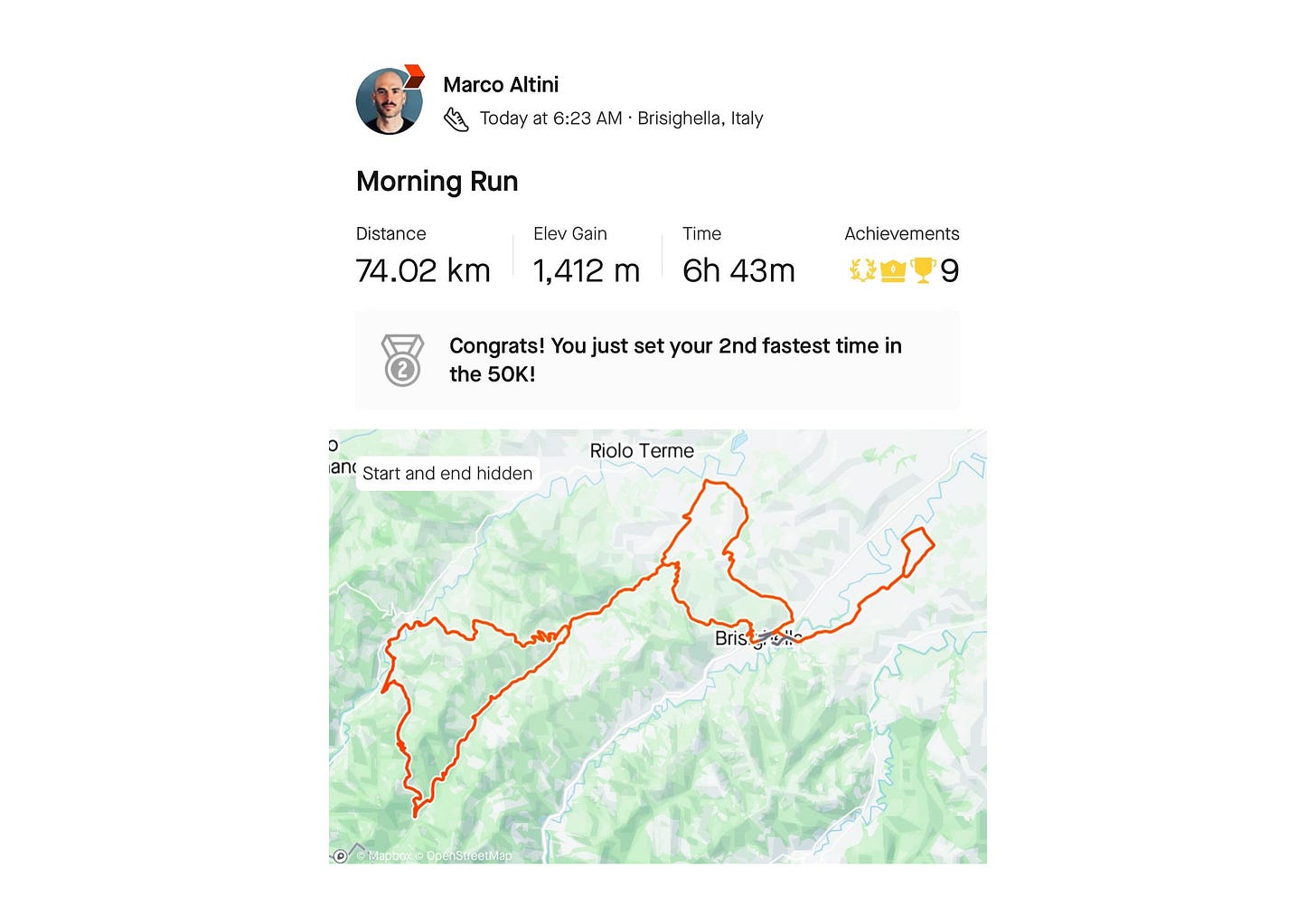articles and updates from March 2024 🌸
heart rate variability, wearables, entrepreneurship, training talk and some ramblings
hi there 👋
I hope all is well.
Here is my third newsletter for 2024. I hope you’ll find it useful and I would like to take the opportunity to thank you for your support.
Please feel free to comment below or in the articles should you have any questions, and I will follow up.
Take care!

Heart rate variability (HRV) 🫀
Negative responses to stress: what to do? One of the most interesting things about HRV is that it does not represent stress. It represents our response to stress. This is the case when we measure HRV according to best practices, i.e. far from stressors, ideally in the morning, but possibly also in the night, if we have a quiet evening routine. When HRV is stable, it means that we have responded well to stressors, and re-normalized quickly. It doesn’t mean that we are not experiencing stress. When we see a negative response to stress (e.g. a suppressed HRV below our normal range, for a few days), what shall we do? Learn more, here.
on HRV and arrhythmia: can we still measure it? I have received the question above and figured I’d address it here as this is quite a common concern among people tracking HRV, maybe even more so for endurance athletes who seem to be at higher risk of arrhythmia. Learn more, here.
Is there a meaningful way to interpret shifts of the HRV normal range over a longer period of time? I have received the question above in reply to a post in which I was covering the normal range and its importance in contextualizing daily or weekly changes in resting physiology. What about the normal range itself? How does it change over time and what do those changes mean? Find my answer, here, covering also the case study shown below.

Wearables ⌚️
Updates to an article:
continuous HRV measurement: among the many problems we have when trying to use HRV outside of standard protocols (e.g. a morning measurement or a night recording while asleep), the first one we face is rather straightforward, but typically hidden from you: it is not possible to collect high-quality PPG data unless we do not move at all. Check out some data I collected, in a short video I recorded and find more considerations, here.
Podcasts, Talks, and articles 🎙️
Fast Talk Labs: A few weeks ago I had a good chat with Trevor Connor and Stephen Seiler, covering important differences between metrics that are measured by the devices we use, and metrics that are estimated. Broadly speaking, measurements require that we use a sensor that can quantify what we are interested in. Normally, measurements can be validated against a reference or gold standard. For example, heart rate is a measurement, and measuring heart rate with optical sensing, the way a wearable does, can be validated against an electrocardiogram (ECG). On the other hand, estimates are guesses based on somewhat related parameters. Some guesses are quite simplistic (e.g. your maximal heart rate based on your age), while others are more sophisticated (e.g. your sleep stages based on HRV, temperature and movement data), but they are still guesses, and tend to have larger errors. Some estimates are completely made up and cannot even be validated, because no reference exists (e.g. readiness or recovery scores, stress scores, etc.). In this podcast, we discuss training and recovery metrics, and the implications of relying on (somewhat made-up) estimates, which seems to be the current trend. I hope you will find some useful pointers in there.
I'll be speaking at the European Athletics High-Performance Webinar series on May 17th. You can access via their e-learning platform, here.
Building 🛠️
HRV4Training Pro. You can find the user guide here. I hope you’ll like the new platform, and would like to thank you for your support (also: use code SCIENCE for 20% off).
Training talk 🏃🏻♂️🚴
4 things I'm changing and 4 things I'm not changing while preparing for this year's 100 km del Passatore. The 100 km del Passatore is the oldest ultramarathon in Italy, which goes from Florence to Faenza (passing from Brisighella, where I recently relocated). As I spend much of my time either training or thinking about training, here are a few things I’ve changed, and a few things I have not changed, for this year’s race. I hope there is something useful in here for you too.
Training log. As the name says, this is simply my training diary for this year.

That’s a wrap for this month.
Thank you for reading, and see you next month.
Recent newsletters:
Marco holds a PhD cum laude in applied machine learning, a M.Sc. cum laude in computer science engineering, and a M.Sc. cum laude in human movement sciences and high-performance coaching.
He has published more than 50 papers and patents at the intersection between physiology, health, technology, and human performance.
He is co-founder of HRV4Training, advisor at Oura, guest lecturer at VU Amsterdam, and editor for IEEE Pervasive Computing Magazine. He loves running.
Social:




Con quei 70km, la maratona a Boston non la vedi neanche. Sarà riscaldamento. Spero di poterti beccare per una corsetta distensiva!